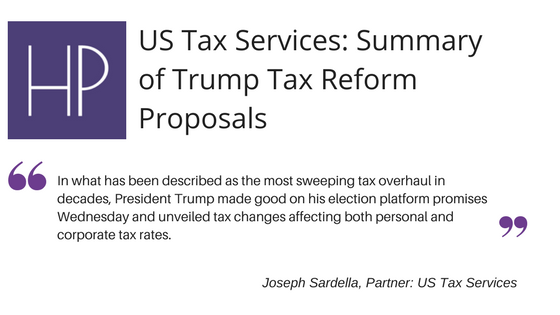In what has been described as the most sweeping tax overhaul in decades, President Trump made good on his election platform promises Wednesday and unveiled tax changes affecting both personal and corporate tax rates.

President Trump cast the tax plan as an economic imperative but provided no measure of the tax plan’s cost and how the working class would benefit from proposals that has explicit and substantial rewards for wealthy Americans and corporations.
The tax plan reflects the four pillars of his tax reform; simplification, increase take-home pay, making American businesses more competitive and bringing back home trillions of dollars kept offshore to reinvest in the American economy.
For individuals, the tax plan would compress the tax brackets from seven to three, with tax rates of 12 percent, 25 percent and 35 percent. A new “zero bracket” will be created by eliminating taxes on the first $24,000 of income earned by a married couple and $12,000 earned by a single individual. This will be accomplished by increasing the standard deduction to $12,000 for individuals and $24,000 for married couples filing jointly. The deduction for mortgage interest would be preserved as would charitable donations in order to help strengthen civil society. However, itemized deductions would be trimmed by eliminating the deduction for state and local tax expenses. There would be an increase to the child tax credit from $1,000 to a yet unspecified amount and the creation of a new $500 tax credit for non-child dependents, such as the elderly.
The alternative minimum tax for individuals and corporations, estate tax (death tax) and the generation skipping tax would be eliminated entirely.
For corporations, the tax rate would be reduced to 20% from 35%, a shift that is cited as needed to make American companies more competitive with their foreign counterparts. Businesses will be able to write-off (or “expense”) the cost of new investments in depreciable assets other than structures made after September 27, 2017 for at least five years. A significant change would limit the ability of corporations to deduct interest expenses. Details have yet to be worked out. The framework will preserve business credits in research and development and low-income housing.
A new tax rate of 25% would be introduced for “pass-through” businesses such as partnerships sole proprietorships and S corporations which are currently taxed at the rate of their owners. This is a significant change as 95 percent of businesses in the U.S. are structured as pass through entities.
The most significant proposal impacts multinational corporations. The present tax system encourages American corporations to keep their earnings overseas and not repatriate them back to the U.S. The new rules propose a 100 percent exemption for dividends received from foreign subsidiaries in which the U.S. parent owns at least a 10 percent stake. This represents a shift in taxation to a territorial tax system which in theory means U.S. corporations would not be taxed on foreign overseas earnings. To transition to this territorial system the framework treats foreign earnings that have accumulated overseas under the old system as having been repatriated. The mechanism would presumably incorporate a one-time “repatriation tax” to encourage U.S. multinationals to bring back home significant cash presently held in overseas subsidiaries.
The tax plan faces harsh realities and the next step is sell the plan to U.S. lawmakers who have been deeply divided this year. President Trump has asked Democrats to support the plan stating that “Democrats and Republicans in Congress should come together, finally, to deliver this giant win for the American people”. Democrats and others have condemned the plan as an irresponsible boon to the rich and some are concerned about the long-term impact of a plan they say could cost more than $2 trillion over a decade.
The political stakes to the President are high as he desperately tries to score a legislative win before his first year in office draws to a close. It remains to be seen if he can pull together the support required to implement the most significant tax changes since 1986.
